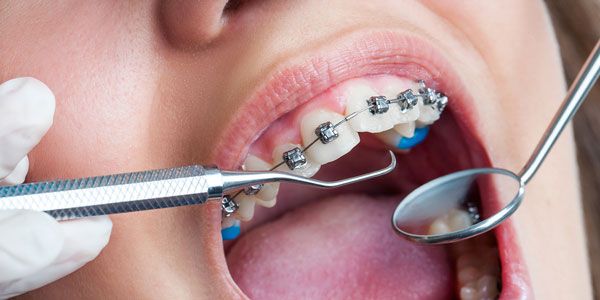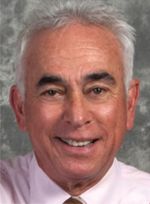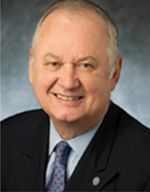CEU (Continuing Education Unit): 2 Credits
Educational aims and objectives
This article aims to determine whether canine retraction followed by incisor retraction is more efficient than en masse retraction of the six anterior teeth during extraction space closure.
Expected outcomes
Orthodontic Practice US subscribers can answer the CE questions to earn 2 hours of CE from reading this article. Correctly answering the questions will demonstrate the reader can:
- Realize the role of anchorage when trying to achieve space closure.
- Identify different types of retraction devices that should be used.
- Realize the role of overjet and crowding in anchorage loss.
- Realize the differences between primary anchorage and secondary anchorage.

Drs. Amy H. Hoch, Gerald Hoch, Analia Veitz-Keenan, Olivier Nicolay, and George J. Cisneros discuss multiple factors that contribute to whether clinicians select one technique over another
 Abstract: The intent of this article was to review the literature to determine whether canine retraction followed by incisor retraction is more efficient than en masse retraction of the six anterior teeth during extraction space closure. Methods: Specific keyword phrases such as “anchorage loss in orthodontic space closure,” “en masse retraction in orthodontics,” and “two-step retraction in orthodontics” were used to search Google Scholar, PubMed, Embase, and Cochrane Ovid for published articles. No language restrictions were placed when searching for articles. In addition, the authors’ hand-searched related articles as well. Results: Over 41 articles were obtained and reviewed. All articles were categorized according to the following subtitles: anchorage, overjet reduction, duration, adolescents versus adults, mechanics, lingual versus buccal appliances, etc. Within each category, subcategories were created: TADs, NiTi closing coils, power chains, headgear, etc., to further catalog the articles. Conclusion:
Abstract: The intent of this article was to review the literature to determine whether canine retraction followed by incisor retraction is more efficient than en masse retraction of the six anterior teeth during extraction space closure. Methods: Specific keyword phrases such as “anchorage loss in orthodontic space closure,” “en masse retraction in orthodontics,” and “two-step retraction in orthodontics” were used to search Google Scholar, PubMed, Embase, and Cochrane Ovid for published articles. No language restrictions were placed when searching for articles. In addition, the authors’ hand-searched related articles as well. Results: Over 41 articles were obtained and reviewed. All articles were categorized according to the following subtitles: anchorage, overjet reduction, duration, adolescents versus adults, mechanics, lingual versus buccal appliances, etc. Within each category, subcategories were created: TADs, NiTi closing coils, power chains, headgear, etc., to further catalog the articles. Conclusion:
There is no strong evidence supporting one method over the other. Both techniques can be effective along with the use supplemental materials such as TADs, NiTi closing coils, retraction archwires, and more.
Closing first premolar extraction spaces usually requires practitioners to select one of the two following strategies: retraction of the canines first, followed by retraction of the incisors thereafter or retraction of the six anterior teeth all at once, otherwise known as en masse retraction. It is yet unclear whether a practitioner’s preference is based on anchorage requirement, orthodontic mechanotherapy, esthetics, or mere habit. Although extraction of premolars may be indicated for cases with crowding, severe overjet, etc., an individual’s parameters will help determine the extent and limits of the dental movements within each dental arch. Clearly, there are multiple factors that contribute to whether clinicians select one technique over another, or whether one is necessarily better than another.
Anchorage loss is multi-factorial, making the issue more complex than it appears. The concept of anchorage control is rooted in Newton’s Third Law of Motion: “For every action, there is an equal and opposite reaction.”1 However, with some of the therapeutic advances we have today, different treatment approaches are revisited. Practitioners may prefer to retract the canines first in the belief that retraction of two teeth, then of four teeth may be more effective to maintain anchorage, while others prefer to retract all six anterior teeth at once. All are still trying to achieve the same goal — space closure obtained efficiently with minimal anchorage loss.
There have not been many studies comparing the two aforementioned techniques, but there have been many publications referring to aspects of space closure. Throughout our search of the topic, we found that while canine retraction versus en masse retraction might be a simple question, many factors play a role in its methods.
The most persistent question is, How do we maintain anchorage to use the extraction space for retraction of the anterior teeth? Do we need a transpalatal arch, perhaps with a Nance button to help achieve anchorage? Should we use headgear, mini-implants, tooth-borne anchorage, etc.? As we found more information, more questions surfaced. For instance, what type of retraction devices should we use? For example, there are power chains, nickel-titanium closing coils, retraction archwires with T-loops, retraction archwires with mushroom button loops, etc. When using different methods, there can also be variations between labial appliances and lingual appliances. There can be differences between first premolar extractions and second premolar extractions and much more.
This paper proposes to review the literature and determine whether either two-step retraction is more efficient than en masse retraction or vice versa.
Material and methods
Our review used specific key phrases such as “anchorage loss in orthodontic space closure,” “en masse retraction in orthodontics,” and “two-step retraction in orthodontics” to search Google Scholar, PubMed, Embase, and Cochrane Ovid for published articles. We placed no language restrictions when searching for articles. In addition, the authors hand-searched for related articles.
Through these search methods, over 41 articles were obtained and reviewed. Each article was categorized according to the following subtitles: anchorage, overjet reduction, time, adolescents versus adults, mechanics, lingual versus buccal appliances, etc. Within each category, subcategories were created: TADs, NiTi closing coils, power chains, headgear, etc. to further catalog the articles.
When reviewing the articles, we grouped them based on retraction methodology, anchorage, mechanics, and materials used. The retraction method was grouped into en masse retraction versus two-step retraction, en masse retraction, and two-step retraction. In terms of anchorage, the techniques used were posterior teeth as anchorage, implant anchorage, transpalatal arch as anchorage, and headgear. Many articles compared the following materials when it came to efficiency of closing space with Class I mechanics: NiTi closing coils, elastic modules, such as power chains, and power thread.
Results with discussion
Anchorage can be broken into primary anchorage and secondary anchorage. Geron, S., et al. (2003), describe primary anchorage loss factors as crowding and mechanics and secondary anchorage loss factors as extraction sites, age, and overjet. When comparing primary anchorage loss factors, severe crowding was less conducive to anchorage loss than mechanics. When comparing secondary anchorage loss, extraction sites were more critical than age and overjet. However, it was shown that including the second molar in the anchorage system along with low retraction forces and reduced friction-filled mechanics could be considerably more efficient when controlling and establishing absolute anchorage.
Extraction sites can contribute to anchorage loss, e.g., first premolars versus second premolars. Even though some articles refer to second premolar extraction leading to greater anchorage loss than first premolar extraction patterns, this particular study stated that not enough evidence existed to make it statistically significant.3
Growing and non-growing patients demonstrate differences in anchorage loss. Adults experience greater anchorage loss than adolescents, but the difference between the two groups was not statistically significant. Most likely, this is why growth has been considered a secondary factor when it comes to anchorage loss.
Overjet and crowding are also factors of anchorage loss. Studies have shown that the greater the crowding is in the mandibular arch, the more likely anchorage loss will occur, thus making it a primary factor of anchorage loss. Although biomechanically speaking, it requires less anchorage to unravel crowding than to reduce overjet.
Kawakami and co-workers4 used implants as anchorage with lingual appliances after second premolar extractions and showed that with implant-supported anchorage, little anchorage loss occurred when retracting the six anterior teeth en masse.
Temporary anchorage devices (TADs) and miniscrew implants are now more common in the orthodontic mechanotherapy. Studies have shown that TADs and microscrews offer effective anchorage control in patients that require maximum anchorage.5-15
Even though headgear has been widely used over the years and has been valued as a useful anchorage device, issues like patient compliance and the negative side effects the headgear may have on the patient’s occlusion limits its use.
 Thiruvenkatachari, et al.,9 compared the rate of canine retraction with conventional molar anchorage and titanium implant anchorage. In that study, there was a significant difference in retraction with implant anchorage and molar anchorage. They observed approximately 0.35 mm – 0.60 mm more retraction with implants than with conventional molar anchorage. Moreover, Kuroda, et al.,11 conducted a study comparing headgear use and the use of mini-screws to help retract the canines and incisors. Both treatment modalities had acceptable results; however, using mini-screws helped improves the patients’ profiles by providing more effective anchorage.
Thiruvenkatachari, et al.,9 compared the rate of canine retraction with conventional molar anchorage and titanium implant anchorage. In that study, there was a significant difference in retraction with implant anchorage and molar anchorage. They observed approximately 0.35 mm – 0.60 mm more retraction with implants than with conventional molar anchorage. Moreover, Kuroda, et al.,11 conducted a study comparing headgear use and the use of mini-screws to help retract the canines and incisors. Both treatment modalities had acceptable results; however, using mini-screws helped improves the patients’ profiles by providing more effective anchorage.
Force delivery taxes anchorage, and the type of force used during treatment matters. Studies have researched the different types of materials used to achieve this movement. Nickel-titanium (NiTi) closing coils, elastic modules, and closing loop archwires are among some of the most popular approaches in the retraction of the anterior dentition. However, NiTi closing coils seem to be the most efficient and effective modality.16-21
In summary, little difference was found between the two retraction techniques — en masse versus canine retraction — in maintaining molar anchorage and duration of treatment, however, there were variations in the methodology used for retraction of the anterior teeth.22 NiTi coils with 150 grams of force were the most efficient retracting modality with the least amount of unwanted side effects. Moreover, TADs appear to be the most effective in maximizing anchorage during extraction space closure. Transpalatal arches with a Nance button can also offer effective anchorage as well as headgear; however, headgear is dependent on patient compliance.
Orthodontic practitioners have multiple techniques for treating patients, especially with extractions. Several opinions exist about whether two-step retraction or en masse retraction is the most effective method. This review has found that both techniques will produce similar outcomes. However a few items clinicians consider when treating extraction patients are the type of anchorage used, the materials used to retract the anterior teeth, and the amount of force applied to the teeth.
Conclusion
There is no difference between en masse and two-step retraction. When closing extraction spaces with either method, the most efficient way to retract the anterior segment is with 150-gram NiTi closing coils. In both retraction methods, clinicians should consider additional anchorage devices to reduce anchorage loss.
References
- Kuhlberg AJ, Priebe DN. Space closure and anchorage control. Semin Orthod. 2001;7(1): 42-49.
- Peck S. A biographical portrait of Edward Hartley Angle, the first specialist in orthodontics, part 1. Angle Orthod. 2009;79(6): 1021-1027.
- Geron S, Shpack N, Kandos S, Davidovitch M, Vardimon AD. Anchorage loss — a multifactorial response. Angle Orthod. 2003;73(6): 730-737.
- Kawakami M, Miyawaki S, Noguchi H, Kirita T. Screw-type implants used as anchorage for lingual orthodontic mechanics: a case of bimaxillary protrusion with second premolar extraction. Angle Orthod. 2004;74(5): 715-719.
- Thiruvenkatachari B, Ammayappan P., Kandaswamy R. Comparison of rate of canine retraction with conventional molar anchorage and titanium implant anchorage. Am J Orthod Dentofacial Orthop. 2008;134(1): 30-35.
- Cope JB. Temporary Anchorage devices in orthodontics: a paradigm shift. Semin Orthod. 2005;11(1): 3-9.
- Upadhyay M, Yadav S, Patil S. Treatment effects of mini-implants for en-masse retraction of anterior teeth in bialveolar dental protrusion patients: a randomized controlled trial. Am J Orthod Dentofacial Orthop. 2008;134(1): 18-30.
- Basha AG, Shantaraj R, Mogegowda SB. Comparative study between conventional en-masse retraction (sliding mechanics) and en-masse retraction using orthodontic micro implant. Implant Dent. 2010;19(2): 128-132.
- Thiruvenkatachari B, Pavithranand A, Rajasigamani K, Kyung HM. Comparison and measurement of the amount of anchorage loss of the molars with and without the use of implant anchorage during canine retraction. Am J Orthod Dentofacial Orthop. 2006;129(4):551-554.
- Park HS, Kwon TG. Sliding mechanics with microscrew implant anchorage. Angle Orthod. 2004;74(5):703-710.
- Kuroda S, Yamada K, Deguchi T, Kyung H, Takano-Yamamoto T. Class II malocclusion treated with miniscrew anchorage: comparison with traditional orthodontic mechanics outcomes. Am J Orthod Dentofacial Orthop. 2009;135(3):302-309.
- Yao CC, Lai EH, Chang JZ, Chen I, Chen Y. Comparison of treatment outcomes between skeletal anchorage and extraoral anchorage in adults with maxillary dentoalveolar protrusion. Am J Orthod Dentofacial Orthop. 2008;134(5):615-624.
- Benson PE, Tinsley D, O’Dwyer JJ, Majumdar A, Doyle P, Sandler PJ. Midpalatal implants vs. headgear for orthodontic anchorage — a randomized clinical trial: cephalometric results. Am J Orthod Dentofacial Orthop. 2007;132(5):606-615.
- Upadhyay M, Yadav S, Nanda R. Vertical-dimension control during en-masse retraction with mini-implant anchorage. Am J Orthod Dentofacial Orthop. 2010;138(1):96-108.
- Garfinkle JS, Cunningham LL Jr, Beeman CS, Kluemper GT, Hicks EP, Kim MO. Evaluation of orthodontic mini-implant anchorage in premolar extraction therapy in adolescents. Am J Orthod Dentofacial Orthop. 2008;133(5):642-653.
- Samuels RH, Rudge SJ, Mair LH. A clinical study of space closure with nickel-titanium closed coil springs and an elastic module. Am J Orthod Dentofacial Orthop. 1998;114(1):73-79.
- Nightingale C, Jones SP. A clinical investigation of force delivery systems for orthodontic space closure. J Orthod.2003;30(3):229-236.
- Dixon V, Read MJF, O’Brien KD, Worthington HV, Mandall NA. A randomized clinical trial to compare three methods of orthodontic space closure. J Orthod. 2002;29(1):31-36.
- Samuels, RH, Rudge SJ, Mair LH. A comparison of the rate of space closure using a nickel-titanium spring and an elastic module: a clinical study. Am J Orthod Dentofacial Orthop. 1993;103(5):464-467.
- Nattrass C, Ireland AJ, Sherriff M. The effect of environmental factors on elastomeric chain and nickel titanium coil springs. Eur J Orthod.1998;20(2):169-179.
- Nattrass C, Ireland A, Sherriff M. An investigation into the placement of force delivery systems and the initial forces applied by clinicians during space closure. Br J Orthod.1997;24(2):127-131.
- Heo W, Nahm DS, Baek SH. En masse retraction and two-step retraction of maxillary anterior teeth in adult Class I women. A comparison of anchorage loss. Angle Orthod. 2007;77(6):973-978.
Stay Relevant With Orthodontic Practice US
Join our email list for CE courses and webinars, articles and mores

 Amy H. Hoch, DDS, earned her undergraduate degree at the University of Michigan in Ann Arbor and went on to attend dental school at New York University (NYU) College of Dentistry. After graduating NYU, Dr. Amy Hoch went on to complete a 1-year general dental residency at St. Barnabas Hospital in the Bronx. In August 2010, she started a 3-year orthodontic residency at New York University College of Dentistry. Dr. Amy Hoch is a Diplomate for the American Board of Orthodontics.
Amy H. Hoch, DDS, earned her undergraduate degree at the University of Michigan in Ann Arbor and went on to attend dental school at New York University (NYU) College of Dentistry. After graduating NYU, Dr. Amy Hoch went on to complete a 1-year general dental residency at St. Barnabas Hospital in the Bronx. In August 2010, she started a 3-year orthodontic residency at New York University College of Dentistry. Dr. Amy Hoch is a Diplomate for the American Board of Orthodontics. Gerald Hoch, DDS, received his undergraduate education at Rutgers University in New Brunswick, New Jersey. He graduated New York University (NYU) College of Dentistry with high distinction and went on to complete his orthodontic residency there as well. At NYU, he was elected to OKU, the Dental Honors Fraternity. Dr. Gerald Hoch has been teaching at NYU since 2007 as a postgraduate orthodontic attending.
Gerald Hoch, DDS, received his undergraduate education at Rutgers University in New Brunswick, New Jersey. He graduated New York University (NYU) College of Dentistry with high distinction and went on to complete his orthodontic residency there as well. At NYU, he was elected to OKU, the Dental Honors Fraternity. Dr. Gerald Hoch has been teaching at NYU since 2007 as a postgraduate orthodontic attending. Analia Veitz-Keenan, DDS, is a practicing general dentist. She holds the position of Clinical Associate Professor in the Department of Oral Maxillofacial Pathology, Radiology and Medicine, and is currently the Director of Evidence-Based Dentistry in the Department of Epidemiology and Health Promotion at NYU College of Dentistry. She teaches to undergraduate and postgraduate students, as well as coordinates and teaches activities for faculty.
Analia Veitz-Keenan, DDS, is a practicing general dentist. She holds the position of Clinical Associate Professor in the Department of Oral Maxillofacial Pathology, Radiology and Medicine, and is currently the Director of Evidence-Based Dentistry in the Department of Epidemiology and Health Promotion at NYU College of Dentistry. She teaches to undergraduate and postgraduate students, as well as coordinates and teaches activities for faculty. Olivier Nicolay, DDS, MMSc, is Acting Chair and Clinical Associate Professor – Department of Orthodontics at NYU College of Dentistry. He has a DCD from the Universite Paris Descartes in France, a DDS from Columbia University, and a Certificate in Orthodontics, Masters in Medical Sciences from Harvard. After graduation, Dr. Nicolay joined the Ohio State University where he taught postgraduate students and was involved in research. In 1989, he assumed the position of Program Director at Columbia University, pursuing his interests in research and teaching orthodontics. He has been member of the NYU College of Dentistry since 2002. He is a Diplomate of the American Board of Orthodontics, a Member of Angle East, component of the Angle Society of Orthodontists, the American Association of Orthodontists, and the American Dental Association.
Olivier Nicolay, DDS, MMSc, is Acting Chair and Clinical Associate Professor – Department of Orthodontics at NYU College of Dentistry. He has a DCD from the Universite Paris Descartes in France, a DDS from Columbia University, and a Certificate in Orthodontics, Masters in Medical Sciences from Harvard. After graduation, Dr. Nicolay joined the Ohio State University where he taught postgraduate students and was involved in research. In 1989, he assumed the position of Program Director at Columbia University, pursuing his interests in research and teaching orthodontics. He has been member of the NYU College of Dentistry since 2002. He is a Diplomate of the American Board of Orthodontics, a Member of Angle East, component of the Angle Society of Orthodontists, the American Association of Orthodontists, and the American Dental Association. George J. Cisneros, DMD, earned his dental degree from the University of Pennsylvania School of Dental Medicine and a specialty certification in both Pediatric Dentistry and Orthodontics, as well as a Master of Medical Science degree (MMSC) in Oral Biology at Boston’s Children’s Hospital Medical Center, the Forsyth Dental Center, and the Harvard School of Dental Medicine, respectively. He developed and established Postgraduate Training Programs in Orthodontics at Albert Einstein College of Medicine/Montefiore Medical Center and Saint Barnabas Hospital in New York, and served as Chair of Orthodontics at New York University College of Dentistry. He is a Diplomate of the American Board of Pediatric Dentistry (ABPD) and the American Board of Orthodontics (ABO), and has served as an ABO board examiner and on the ABPD Advisory Committee. He also was elected to and served on the American Academy of Pediatric Dentistry Board of Trustees. For nearly 20 years, he was the Dental Director for the Craniofacial Disorders team and was a consultant with the Sleep-Wake Disorders Center at Montefiore Medical Center/Einstein College of Medicine. A recipient of the Milo Hellman Award from the American Association of Orthodontists, Dr. Cisneros’ main research interests include the evaluation of facial growth and development using nuclear medical techniques, the diagnosis and treatment of patients with obstructive sleep apnea, the impact of fixed orthodontic appliance design upon the efficiency of tooth movement, and the study of various computer-imaging techniques. Other research interests are related to the use of speech appliances in children with velopharyngeal insufficiency, the relationship between malocclusion and speech sound production, patient self-image and perception of need for orthodontic care, the impact of fixed and removable orthodontic appliances on periodontal health, the impact of demineralized white spot lesions on the dentition and their prevention using dental varnishes and sealants, and enhancing doctor/patient interaction and communication. He has published more than 100 scientific peer-reviewed articles, book chapters, and abstracts.
George J. Cisneros, DMD, earned his dental degree from the University of Pennsylvania School of Dental Medicine and a specialty certification in both Pediatric Dentistry and Orthodontics, as well as a Master of Medical Science degree (MMSC) in Oral Biology at Boston’s Children’s Hospital Medical Center, the Forsyth Dental Center, and the Harvard School of Dental Medicine, respectively. He developed and established Postgraduate Training Programs in Orthodontics at Albert Einstein College of Medicine/Montefiore Medical Center and Saint Barnabas Hospital in New York, and served as Chair of Orthodontics at New York University College of Dentistry. He is a Diplomate of the American Board of Pediatric Dentistry (ABPD) and the American Board of Orthodontics (ABO), and has served as an ABO board examiner and on the ABPD Advisory Committee. He also was elected to and served on the American Academy of Pediatric Dentistry Board of Trustees. For nearly 20 years, he was the Dental Director for the Craniofacial Disorders team and was a consultant with the Sleep-Wake Disorders Center at Montefiore Medical Center/Einstein College of Medicine. A recipient of the Milo Hellman Award from the American Association of Orthodontists, Dr. Cisneros’ main research interests include the evaluation of facial growth and development using nuclear medical techniques, the diagnosis and treatment of patients with obstructive sleep apnea, the impact of fixed orthodontic appliance design upon the efficiency of tooth movement, and the study of various computer-imaging techniques. Other research interests are related to the use of speech appliances in children with velopharyngeal insufficiency, the relationship between malocclusion and speech sound production, patient self-image and perception of need for orthodontic care, the impact of fixed and removable orthodontic appliances on periodontal health, the impact of demineralized white spot lesions on the dentition and their prevention using dental varnishes and sealants, and enhancing doctor/patient interaction and communication. He has published more than 100 scientific peer-reviewed articles, book chapters, and abstracts.
